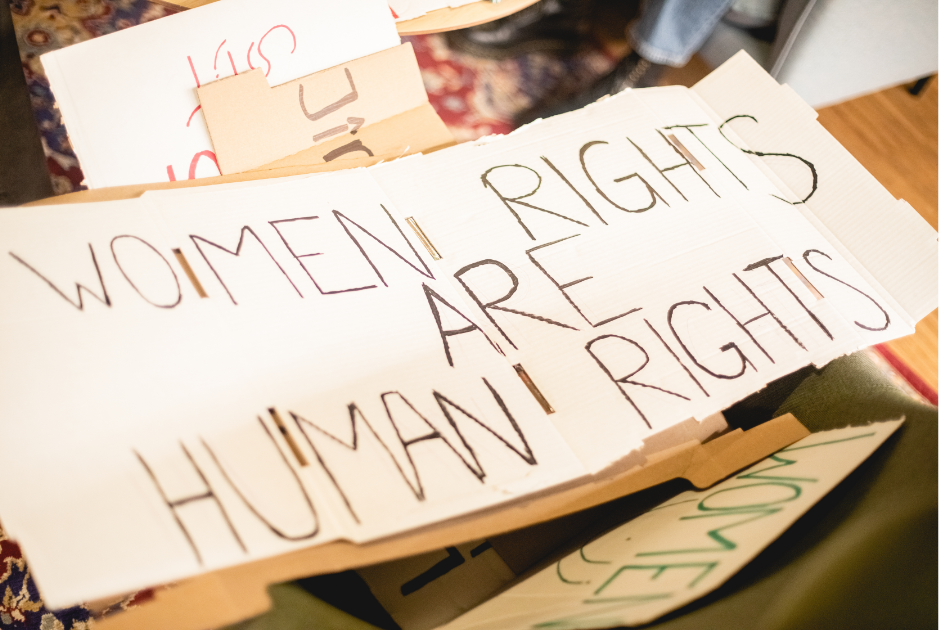An epic solution for saving our quickly disappearing school music programs.
3D printers and violins have more in common than you might think.
Imagine a high school bus stop around 7:30 a.m.
You’d see maybe eight teenagers: three holding sports duffle bags; one reading a library book; another holding a large art portfolio. The last three might be holding instrument cases shaped like guitars, violins, and trombones.
But what if those instruments disappeared? Unfortunately, that's the reality for many K-12 students across the country.
These days, most American K-12 schools are focusing heavily on science, technology, engineering, and mathematics (STEM) programs, but performing arts programs are getting left behind. When extracurricular budgets are tight, music programs are often the first to go.
As it turns out, STEM programs could actually save music programs.
That's Kaitlyn Hova's great idea.
Kaitlyn Hova. All photos provided by the Hovas, used with permission.
At 13 years old, Kaitlyn became a professional violinist and toured all over the country. To book more gigs, she created a website and started playing around with code, too. But it wasn’t until a music theory course at Berklee College of Music in Boston that Kaitlyn discovered that she had synesthesia, a neurological phenomenon that connects one sensory with another.
Synesthesia inspired Kaitlyn to change academic paths, switching from music in Boston to neuroscience classes at the University of Nebraska at Omaha, in her hometown. After graduating, she also attended Omaha Code School with her husband, Matt Hova, and created the synesthesia network called a “Facebook for people with Synesthesia” to gather data for her epidemiological studies.
Two years ago, Kaitlyn and Matt began printing shapes and stationery and eventually full instruments on a 3D printer.
They stumbled past an Instagram post of David Perry's F-F-Fiddle, a full-sized violin printed with a 3D printer, which inspired the tech-savvy couple to design and 3D-print a violin of their very own. Over the next year and a half, after creating over 60 failed models, the Hovas experimented their way to a 3D-printed, fairly cheap violin that they called the Hovalin 2.0.
The Hovas with their Hovalins.
The best part? Kaitlyn and Matt want to use their invention to help save music programs.
Their idea is that kids in STEM programs could 3D-print instruments in class, thereby saving music programs and lowering each school's costs (the instruments would be free!). Right now, they're working with school districts to raise enough money to put 3D printers in schools all over the U.S., hoping to kickstart the idea into action.
"After making the [Hovalin], we realized it could be really wonderful thing to try to help out with music programs," Kaitlyn explains. "Maybe they have a good STEM program going on, but their music program is losing funding."
"It's so empowering for kids to see they can make something out of software," Kaitlyn said. "I think it makes it more accessible."
The Hovas are not the first and probably won't be the last to create a 3D-printed violin. But they are the first to use their invention for good in this particular way.
The best part is that this solution is relatively simple but full of creativity and possibility. Plus, a recent study shows that kids benefit from music training as much as from basic classes, like mathematics.
As a former music student from a school with an at-risk music program, the Hovas' awesome intentions struck a chord with me. We need more simple, effective solutions like these for our kids. Here’s to hoping the program takes off!





 What was I doing again?
What was I doing again? A space waitress at work.
A space waitress at work.  Waking Up Funeral GIF
Waking Up Funeral GIF Rihanna Nails GIF
Rihanna Nails GIF Yoga pants.Image via Canva.
Yoga pants.Image via Canva. Our natural lashes are nice just the way they are!
Our natural lashes are nice just the way they are! One step forward, many steps back. Image via Canva.
One step forward, many steps back. Image via Canva.  Homelessness is especially rampant on the West Coast.Image via Canva
Homelessness is especially rampant on the West Coast.Image via Canva